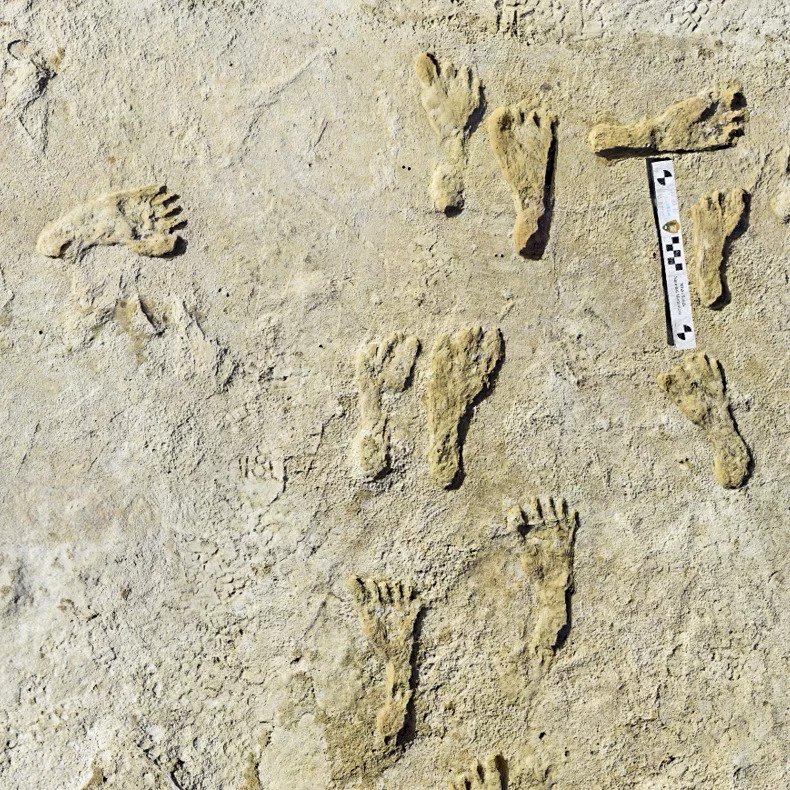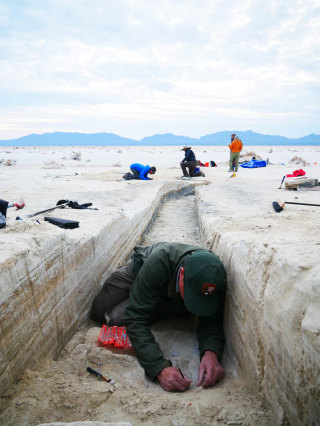Fossil footprints show humans in North America more than 21,000 years ago
The question of when humans first migrated to North America has long been a matter of hot debate among researchers who have continually uncovered evidence of ever-earlier dates. Now, analysis of ancient fossilized human footprints in New Mexico has pushed the date back once again — to at least 21,000 years ago.

Writing in the journal Science, a team of researchers led by Matthew Bennett of Bournemouth University in England examined a set of human footprints preserved on an ancient lakeshore in New Mexico’s White Sands National Park, a location now known for its expansive — and dry — chalk-coloured dunes.
They concluded that the footprints were made between 21,000 and 23,000 years old. The date would place human habitation in the Americas during the Last Glacial Maximum and at least 5,000 years earlier than widely accepted evidence has yet suggested.

The footprints were mostly made by children and teenagers
Bennett and his colleagues, whose paper was published Thursday, determined that the tracks belonged to numerous people, mostly children and teenagers. What’s more, the footprints spanned a significant time period, suggesting that humans frequented the area for at least a few thousand years.
“One of the beautiful things about footprints is that, unlike stone tools or bones, they can’t be moved up or down the stratigraphy,” Bennett says, according to Science News, referring to the layers where artefacts and fossils are found. “They’re fixed, and they’re very precise.”
Normally, rock layers are “a nightmare” to date, says Bennett, a professor of environmental and geographical sciences. But he says that two years ago, archaeologist David Bustos, a study co-author, discovered a site where human footprints were co-mingled with a layer of sediment containing seeds from the spiral ditch grass, an aquatic plant that could be carbon-dated. The results gave an estimate for the footprints.
Tom Higham, an archaeological scientist and radiocarbon-dating expert at the University of Vienna, who was not part of the study, called the latest findings “extremely exciting.”
“I am convinced that these footprints genuinely are of the age claimed,” he said, according to Nature.
The evidence for older dates for migration to the Americas is less solid
Although previous studies have suggested an even earlier migration of modern humans into North America — including a controversial 2017 paper suggesting that people lived in the Southern California region as long as 130,000 years ago — those claims have been largely discounted because of the “equivocality of the evidence,” Nature says. For instance, rocks were mistaken for tools, and marks on animal bones thought to be made by humans turned out to have a natural origin, the journal says.
“For decades, archaeologists have debated when people first arrived in the Americas,” says Vance Holliday, a University of Arizona archaeologist and co-author of the latest paper.
“Few archaeologists see reliable evidence for sites older than about 16,000 years. Some think the arrival was later, no more than 13,000 years ago by makers of artefacts called Clovis points.”
Last year, Nature published a paper by archaeologists who claimed to have found human artefacts in Mexico’s Chiquihuite Cave dating to at least 26,000 years ago.
But many fellow archaeologists were sceptical, pointing to the possibility that what the researchers had identified as stone tools were in fact naturally fractured rocks.
Ciprian Ardelean, who led the 2020 study at Chiquihuite, readily acknowledges that the discovery by Bennett and his colleagues “is very close to finding the Holy Grail.”
“I feel a healthy but profound envy — a good kind of jealousy — towards the team for finding such a thing,” Ardelean told National Geographic.





